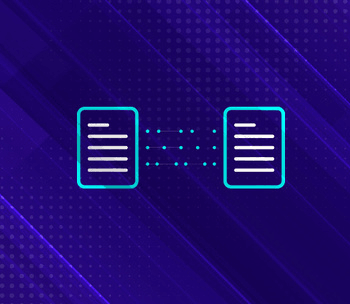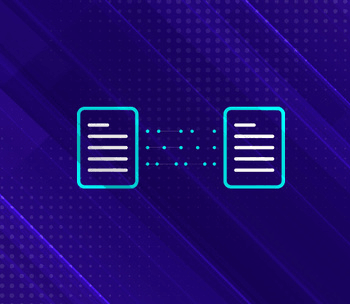In the previous sections of the Go-Live Success blog series, we went over how to manage opening balances, inventory, and Accounts Receivables when transitioning from your legacy application to NetSuite. This section will focus on how to best cut over Accounts Payables (“A/P”) and open purchase orders.
Need to Start from the Beginning? Here are the previous entries:
Now that Accounts Receivables are set up for your customers, it is time to establish open Accounts Payables balances in NetSuite so vendor bills and bill payments can be managed directly out of NetSuite. There are three scenarios that will need to be addressed:
- Open Vendor Bills
- Open Purchases Orders
- Purchase Orders Received but not Billed
The main focus of this blog is establishing open Accounts Payables, which is not complex in nature. In fact, you’ll notice a lot of parallels between setting up payables compared to receivables.
For each open vendor bill, we need the following standard bill fields:
- Bill Reference Number
- Vendor
- Due Date
- Amount Remaining
- Memo/Description
The transaction date is again excluded in the list above. When importing open vendor bills, the transaction date will be set to the day before the go-live date instead of the actual posting date. The reason is that we need to reverse the GL impact of these imported bills to offset the net GL impact, which is easiest to calculate if they’re all the same accounting period.
Trial balances will be entered for all accounts last, and by offsetting the impact now, we won’t have to worry about backing out these Accounts Payables values from our trial balance import.
Similarly to when importing invoices, you’ll need to create a dummy item, but using the Non-Inventory for Purchase item type. Since it’s used specifically for this exercise, it should be named something such as “Opening Balances - Vendor Bill” item.
This item will post to the same dummy “Opening Balances” GL account that was used previously, so a new GL account does not need to be created.


As is the case with invoices, the actual line item detail of the original vendor bill will not be included. Instead, we are replacing the details with a single line, where we will use the new “Opening Balances” item. Also, the amount entered for this bill will only be for the remaining balance due to be paid instead of the original amount.
This approach simplifies the A/P cutover process significantly. Since these open vendor bills are late into the purchase-to-pay cycle and the last step required is just to issue payment to your vendors, there is little benefit of having the actual line item details.
There is more work required to map the line items of the vendor bills to NetSuite items, and it is more difficult to negate the impact, as the bills are not posting only to a single Opening Balances account. Furthermore, it becomes even more complex if bills have been partially paid already, which would require dummy payment records to reduce the amount due to the vendor.
Lastly, including a description with each bill will help you reference the original vendor bill in NetSuite and minimize the time spent checking your previous system to review older transactions. Once imported into NetSuite, each vendor bill will look like this:

Once all open bills have been imported, journal entries must be created to reverse the net GL impact of those bills. A saved search is best to aggregate the GL impact of all bills created. The journal entry created will be the reverse of the GL impact of the vendor bills imported.
Up to this point, we have already created inventory adjustments and invoices when setting up inventory and A/R balances, so be sure to set a filter for only the transaction type for vendor Bills.



After you have created the journal entry, you are all done with establishing open A/P!
Finally, there are also open Purchase Orders to consider. There are several states that POs can exist in at the time of the cutover:
- Open Purchase Orders
- Non-inventory purchases received but not billed yet
- Inventory received but not billed
Open POs that have no related transactions should be imported with their line item details. POs can be imported into NetSuite if there are many of them still open at the time of the cutover. However, if there aren’t many, you might opt to enter them manually into NetSuite, which is a good exercise in adjusting to NetSuite purchase orders.
For non-inventory purchases that have not been billed yet, the easiest method is to just enter the vendor bills as you receive them. The vendor bill will immediately enter the payable due and post the amount to the correct expense account. There is the option of entering the PO and then applying the vendor bill, but in these cases it is added step that we can skip.
The last scenario for inventory received but not billed is the most complex to deal with. It is not sufficient to enter the vendor bill at the time it is sent by the vendor, because doing so will also cause NetSuite to add the inventory into stock.
Since inventory balances have already been established, this approach would artificially inflate the inventory levels. Trying to nullify this impact requires an understanding of how your legacy system handles unbilled inventory receipts, and subsequently would involve inventory adjustments and journal entries, which can get very messy.
The various approaches to handling these types of POs is beyond this blog post, but the best solution by far is to close out all of these purchases orders in your old system. Even in cases where the vendor bill has not been sent yet, you should still close out the PO with a dummy vendor bill, and then update it after you have received a copy of the actual bill. If you follow this approach, it is important that this is done first before importing all open payables (as described in this blog post).
I hope you are finding this series helpful and stay tuned for the fifth, and final, part of our Go-Live Success series which covers establishing your trial balances.
Comment below and share your experiences about cutting over in NetSuite!
Please contact Techfino if you need a NetSuite consultant.










